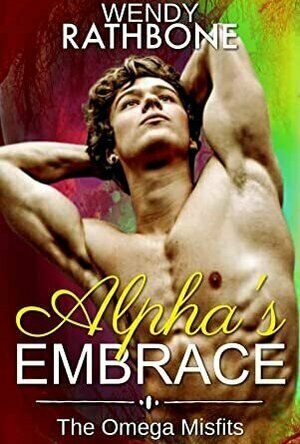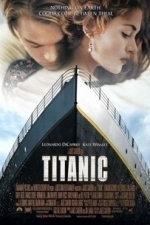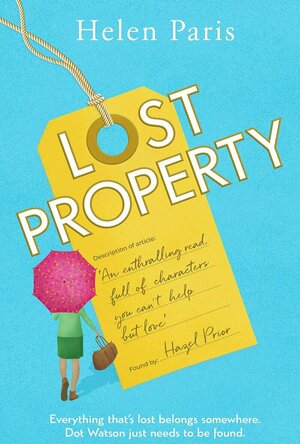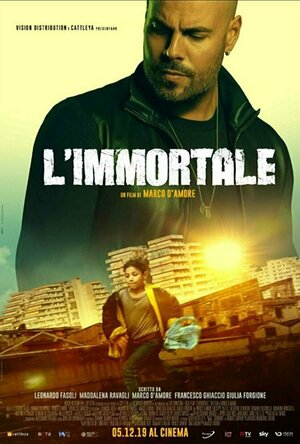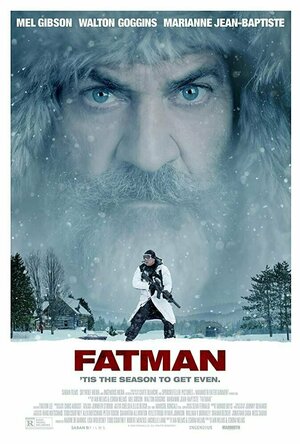Debbiereadsbook (1623 KP) rated Alpha's Embrace (Omega Misfits #3) in Books
Apr 19, 2020
This is book 3 in the Omega Misfits series, but you don't need to have read Trust No Alpha (book 1) or The Alpha's Fake Mate (book 2) before you read this one. They all take place in the same world, but can totally be read as a stand alone read. I HAVE read them, although I did not write reviews for them as I read them via the Unlimited programme.
And I found THIS one the weakest of the three.
Alphas are supposed to mate with Omegas and ONLY with Omegas. However when 2 Omegas mate, and produce a child, that child is a Sylph. Sylph children are removed from society and kept locked up for their own good. They live with a constant Burn, unlike Alphas who get them regularly, and most do not live into adulthood for going insane.
Misha is such a child. Well, not a child, he is well into adulthood and a bit of an anomoly. He can control his Burn, and be a productive member of society, BUT for the fact he is Sylph. Geo is an Alpha and the new general manager at the facility where Misha lives. When Geo touches Misha without gloves, a bond begins. A bond that is as illegal as it is dangerous. To BOTH of them.
Both Misha and Geo know this is different, whatever they are feeling, but Geo is best able to voice it and rationalise what is happening between them. Misha is, for want of a better explanation, away with the fairies most of the time, but then again, being locked up all the time would make anyone so. Misha KNOWS he is Sylph, he KNOWS he cannot bond, so he doesn't know what this is between him and Geo. He KNOWS he wants Geo, in a way that is different to his usual want (Sylphs want everyone) he just doesn't know what to do. Geo makes the decision, but Misha is given a choice. I liked that it took time for them to act on the bond, to consummate it. They both have thoughts about the other, it just takes time for them to act on it. I've filed it as m-preg, cos it is talked about and does appear in other books in the series, but there isn't any here.
Both guys have a say, in the first person. Misha's voice is a little airy-fairy, like I said and Geo's is very much an Alpha, but he does go a little off the rails, and that comes out of nowhere, to be honest. I found Geo the least liked of the three Alphas in these books and I cannot pinpoint exactly why.
I liked how it all sorted out, but I would have liked a bit of an epilogue, a some-time-later type thing, to catch up on them, and how things pan out after what they did, and whether things had changed for Misha with a fully formed bond.
A nice read, a GOOD addition to the series though and I think it really was needed, a story about the Slyph children, who are talked about in the other books. This book just didn't push my buttons as the other two did, I'm afraid.
3 good solid stars
**same worded review will appear elsewhere**

Search Quran (For iPhone)
Book and Reference
App
****** Ranked as Top Paid in Pakistan App Store ****** ****** Ranked as Top Paid in UAE App Store...

Language Therapy 4-in-1
Medical and Education
App
Harness the power of a scientifically proven 4-in-1 speech therapy app that boosts reading, writing,...
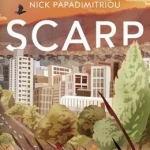
Scarp
Book
es it's difficult to define exactly what this book is: it mixes autobiography, local history,...
Sarah (7800 KP) rated Titanic (1997) in Movies
Feb 5, 2021
Titanic is a rather divisive film. There are many that absolutely love it, the creators of this list among them I don’t doubt. And then there are those that can’t stand it, despite it’s 11 Oscar wins. When it was first released, Titanic’s popularity was immense and it was all the rage at my high school. At that time I loved it like everyone else, but over the years I’ve grown to notice its flaws as well.
Titanic is another epic from the mind of James Cameron and unsurprisingly tells the real life story behind the sinking of the Titanic in 1912. As the true story wasn’t enough, the sinking is shown from the point of view of a love story between Rose Dewitt Bukater (Kate Winslet) and Jack Dawson (Leonardo DiCaprio). In 1996, treasure hunter Brock Lovett (Bill Paxton) and his team are searching the wreckage of the Titanic for a rare diamond and instead come across a preserved drawing of Rose, who meets with Brock and tells the story of her experiences onboard. These experiences involve a class divide, a fiancé with anger management issues (Billy Zane) and some nice (Kathy Bates) and not very nice (Frances Fisher) female aristocrats.
While I can understand why Cameron has intertwined a romance into this real life tragedy, for me it’s this story that lessens the impact of such a horrific tale and makes this into not quite the masterpiece he wanted it to be. There are the obvious plot holes and irrational actions – the hugely memorable water door scene that could blatantly fit more than one person, and the motives for keeping a invaluable diamond hidden for 80+ years only to throw it away in the ocean – are just two of the laughably bad scenes in this. Paired with a sometimes dodgy script (there’s a scene where Rose says “Jack” over half a dozen times in less than a minute) and some cheesy exposition and narration from the older Rose, do not make for an endearing story.
However if you can ignore the romance and poor fictional story, the rest of Titanic is an impressive bit of filmmaking. From the opening shots featuring real life footage of the actual wreckage of the Titanic to the effects used to bring the ship to life, they are truly stunning. You can really appreciate the love and care that has gone in to making this film, and the cinematography is faultless. Water is not an easy element to film yet James Cameron has mastered it with ease and including shots of the real wreckage only adds to the emotions that this evokes, especially as there are a lot of facts interlaced within the romance – the band continuing to play despite impending death is particularly moving. The cast too are strong despite the sometimes questionable material they have to work with. This is undoubtedly the film that made both Leonardo DiCaprio and Kate Winslet megastars in their own rights, although for me I much preferred the more low key performances from the likes of Kathy Bates, Bernard Hill (as Captain Smith) and Victor Garber (as ship builder Thomas Andrews).
Titanic is not perfect. It is a drawn out and overly long romance set aboard a disaster movie and it can’t justify being longer than 3 hours. However despite it’s flaws, it is still a masterpiece in filmmaking and truly an epic film.
Lottie disney bookworm (1056 KP) rated Lost Property in Books
Jul 2, 2021
What isn’t initially clear is why Dot feels guilt-ridden by her father’s suicide but Paris carefully peels back the layers of Dot and her family’s lives to expose their loss, their love and their vulnerability.
Dot herself is fastidious in details, finding safety in rules, routine and order. Her safe words (Sellotape, safety pin, superglue) echo through the novel with no real context except to calm Dot, to allow her to keep everything together and in place. In contrast to this, Dot is clearly falling apart.
Dot’s life is already poles apart from what she envisioned for herself but circumstances cause her to fall further and start looking for an escape: an escape that she finds amongst the stacks of unclaimed items, with a little help from a bottle of absinthe!
Dot’s hallucinations do cause moments of humour but more than this they portray her raw grief and her depression. Dot tries to find a story behind every item in the stacks, to give the item an identity, an owner, a purpose. But what she is really looking for is her identity, her purpose. She passionately fights for these items, believing that their worth surpasses monetary value, but she cannot apply this to herself until it is almost too late.
The characters surrounding Dot serve to reflect how isolated she has made herself.
Our protagonist has few friends in her social circle and those that she does have seem to be work friends, in whom she often finds criticism. I really appreciated the roles of characters such as Anita, she never stopped inviting Dot to events even when Dot had refused several times before. Anita is the perfect model for a friend of someone with depression: keep showing up, keep listening and never give up.
Dot’s mother, Gail, has dementia and has recently moved out of the maisonette she shared with Dot and into a care home. The relationship between mother and daughter has never been as close as the bond Dot had with her father but Dot’s memories of her mother slowly unfurl into the recognition and acceptance of her as a person and a protector, rather than the background character she has always assumed her mother to be.
Dot’s sister Philippa seems to be a bit of a steamroller of a character at first, bossy and controlling in that she plans to sell the maisonette and thus make Dot homeless. However, Philippa finds her spotlight in the final few chapters, perhaps because Dot allows herself to see her sister properly and acknowledge the life and pain that they both shared. The resulting love between the two sisters is heart-warming.
Lost Property is heart-breakingly honest and open. I laughed and, as someone coming to terms with a dementia diagnosis within the family, I cried my little heart out. I frankly couldn’t believe Lost Property is Helen Paris’ debut novel. This is the most emotive book I have read this year.
Thank you to Bookstagrammers.com, Helen Paris and Penguin Random House UK for gifting me a hard copy of this book in exchange for an honest review.
Neon's Nerd Nexus (360 KP) rated The Immortal (2019) in Movies
Sep 9, 2020
Emma @ The Movies (1786 KP) rated Fatman (2020) in Movies
Dec 21, 2020
As Santa tries to keep his workshop afloat in ever trying naughty times. But as he diversifies his team, a new problem raises its ugly head, eternally naughty Billy is less than impressed by his coal and hires a hitman to take Santa out of the festivities for good.
The idea of making this sort of Christmas film is wonderful to me, the action-packed ride of a thriller with just enough festivity to make it a great alternative Christmas movie choice... *chef's kiss*
Bringing the added twist of children getting a little less nice every year, we see the stark reality that this brings to Santa's business model. It gives him the very modern concern of traditional businesses... and I really liked that angle.
Gibson in the gruff but jolly role of Santa fits well with this aesthetic, and the way he manages to turn Santa into a hardened action star really amused me. There were great subtleties in the character and I loved how we saw his changes, and how they dealt with the mystery of Santa as an eternal, all-knowing character. And for that matter, the elves and how they prove to be the most effective workforce on the planet.
Pitted against Santa we have Walton Goggins as our hitman and Chance Hurstfield as Billy... who is the first person I have wished a reindeer trampling on. Billy is the evil part of the baddie contingent, while the Skinny Man (as he's named on IMDb) really feels like he's just bad for the paycheck and you'd actually bring him round after a good talking to. Goggins has an interesting backstory to his character, and yet for some reason we never get a very satisfying look at it. An opportunity missed that leaves part of the storyline a little unanswered.
Almost instantly I was struck by the look of the film, the general muted tones with punctuations of red and green made for very strong visuals. The snow-covered scenery and rustic feel to Santa's compound was a lovely addition too, and it was a refreshing change to the vibrant and excessively cheery depiction of a "traditional" Santa's village.
While I loved the idea they were conjuring here, there were bits of the execution that didn't feel quite right. For an action film, it was missing some... kapow... literally. The explosions had no wow factor and seemed rather tame for this outlandish tale. The film also felt like it was trying to be too many different things. Billy's overly animated maniacal behaviour felt like it was trying to keep the film for a younger audience, but with a 15 rating that was out of their reach. This, coupled with the missing Goggins backstory felt like they weren't convinced by their own ideas. With the film being quite a short 1 hour 40 I think it could have stood a few additions here and there.
I'm definitely here for the menacing Father Christmas, and more actiony Christmas movies in my life. The way they switched this one up put a genuine smile on my face.
Originally posted on: https://emmaatthemovies.blogspot.com/2020/12/fatman-movie-review.html
Andy K (10823 KP) rated Vox Lux (2018) in Movies
Sep 18, 2019
She achieves instant success with her song, so much so, she gets a recording contract and her and her sister are whisked away to Sweden to record it officially and make a music video. Her manager chaperones her time there, but does not have much success. The girls have a good time partying and choosing every excess including the consequences. The video is a success and she becomes a star.
Eighteen years later, the aging pop star is trying to make a comeback and show she can still keep up. Her relationships with her sister, teenage daughter and sister as she has lived the ego-driven life of a celebrity now for too long. One the eve of a concert performance, another massive multi-person shooting happens at a beachfront, the perpetrators donning masks used in one of her videos making her the target of paparazzi and media scrutiny at a pivotal time in her life.
She tries to salvage her relationship with her daughter who is going through her own teenage angst with mixed success. It seems she is her own worst enemy questioning her choices and continuing leading the lifestyle of a demanding celebrity.
The movie seems like a tale of two halves with the teenage Celeste and the "grown up" version even having screen captures saying so. For me the first half was way more interesting than the second. The teenage Celeste was more believable, maybe because you didn't know her, but the screenplay was more interesting for her as well.
One can only imagine the emotions of having to live through such a tragedy and having to rebuild your life afterwards. Then adding on top of it, her instantaneous global stardom could not have done well to heal her physical, but emotional scars as well.
I felt Natalie Portman seemed out of place and her acting felt very wooden and dry to me unlike most of her portfolio. She even was an executive producer on the film along with her costar Jude Law, so she may have been focused on that instead of her acting performance. She doesn't appear in the film until close to an hour in and filmed her scenes over 10 days. It is unfortunate, but I really didn't believe her and took me out of several scenes as a result.
It is hard to empathize with the celebrity lifestyle of excess and demands having never lived it myself. It has certainly been portrayed onscreen much better than it is here and it really felt like the two halves of the film were disconnected and not resolved.
I certainly don't mind, or even encourage, the vague open-ended type of film generally speaking if it is left you to think about the plight of the characters their decisions, and ultimate destinations; however, this film accomplishes this only through bad writing.
The concert footage was well done and Portman certainly delivered on transforming into a Madonna/Britney Spears type icon. I was just hoping for more of a payoff and felt disappointed in the end.

Interval Timer-Tabata,HIIT,Crossfit
Health & Fitness and Lifestyle
App
Interval Timer is a timer application telling the user the beginning and the end of an exercise....
